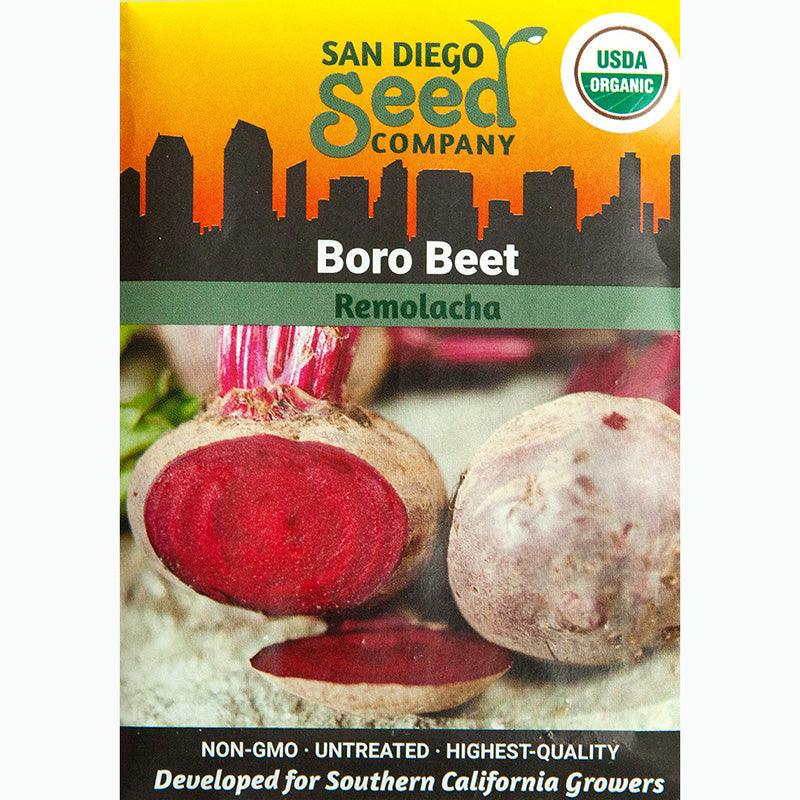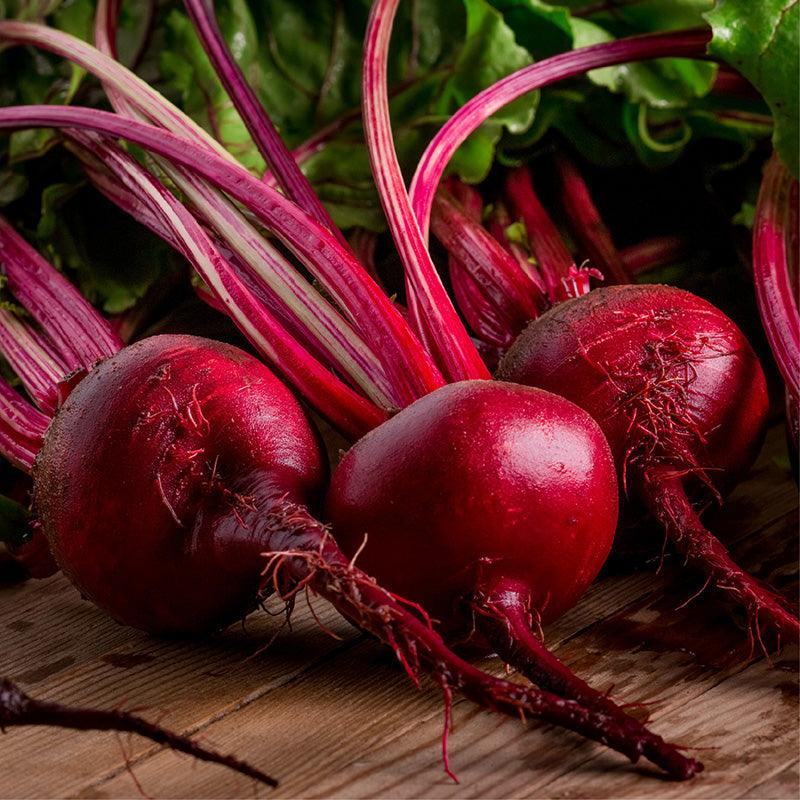Item Number: SNV1011
Organic Boro Beet Seeds
Nutrient-Packed Garden Delight
Varietal Features: Boro beets (Beta vulgaris var. boro) are known for their deep red color and nutrient-rich composition, offering a sweet and earthy flavor.
Visual Appearance: Boro beet plants exhibit vibrant green to reddish-purple foliage, while their taproots grow into smooth, conical bulbs. The roots boast a deep crimson hue, adding visual appeal to any garden.
Taste Profile: When harvested, Boro beets provide a subtly sweet and earthy flavor, making them versatile in various culinary applications.
Planting Boro Beet Seeds:
Seed Selection: Choose high-quality, fresh seeds from reputable suppliers, ensuring viability for optimal germination.
Suitable Growing Zones: Boro beets flourish in USDA plant hardiness zones 3-10, adapting well to different climatic conditions within this range.
Soil Preparation: Loosen soil to a depth of 8-10 inches, eliminating debris and enriching it with organic matter like compost or well-rotted manure.
Sowing: Plant seeds directly about half an inch deep, maintaining adequate moisture for germination. Alternatively, start seeds indoors in biodegradable pots with seed-starting mix.
Ideal Growing Conditions:
Sunlight: Boro beets thrive in full sun but can tolerate partial shade.
Moisture Requirements: Ensure consistent moisture without waterlogging to support healthy growth.
Spacing: Thin seedlings when they reach 2-3 inches in height to provide ample space for growth.
Care and Maintenance:
Watering: Regular watering, especially during dry periods, is crucial. Mulching helps retain moisture and suppress weed growth.
Pest and Disease Control: Monitor for common pests like aphids and leaf miners; use organic pest control methods if necessary. Employ crop rotation to minimize disease risks.
Harvesting Boro Beets:
Timing: Boro beets are typically ready for harvest in 55-70 days, depending on variety and growing conditions.
Size: Harvest baby beets at 1.5-2 inches in diameter or mature beets at 3 inches or larger.
Harvesting Technique: Gently loosen the soil around the beets and lift them from the ground, trimming greens to about an inch for extended storage.
Storing and Usage:
Cleaning: Remove excess soil without washing the beets to prevent premature spoilage. Storage: Store harvested beets in a cool, humid environment like a root cellar or refrigerator for extended shelf life.
Cooking: Boro beets are versatile in various culinary dishes, offering a rich flavor and nutritional benefits. Cultivating Boro beet seeds across USDA zones 3-10 offers not only a visually striking addition to your garden but also provides a subtly sweet and earthy flavor, making them a delightful and versatile vegetable in various culinary creations. Following these steps ensures a bountiful harvest of these vibrant and flavorful root vegetables.




Check Your Zone Compatibility:
Compatible with your zone.
Growing Zone for

Our Guarantee To You
Since 1976, we've served our customers at every stage of growing. Please contact us at any time. We are happy to support and assist you.
Shipping Information
Shipping Information
Shipping Weight: 0.02 lb
Dimensions: 4.5"L x 3.25"W x 0.1"H
Features
Features
- Heirloom
- Open-Pollinated
Characteristics
Characteristics
Planting & Care
Planting & Care
Soil & Water: Beets are easily grown, though they prefer deep, loose soil and even, moderate water. Mulch once established to protect the roots from heat.
Planting & Growing: Soak seeds for at least 12 hours before planting to promote germination. Space 2" for greens, 3" for summer harvest beets, and 4" for storage growing beets. Tolerates light shade.
Harvesting & Storage: For best flavor, harvest roots while they are 1"-3". To minimize moisture loss in the roots, twist off the greens. Roots store well in humid, cool conditions. Greens should be eaten within 1 or 2 days of picking.
Useful Information
Useful Information
Guarantee
Guarantee
Share





